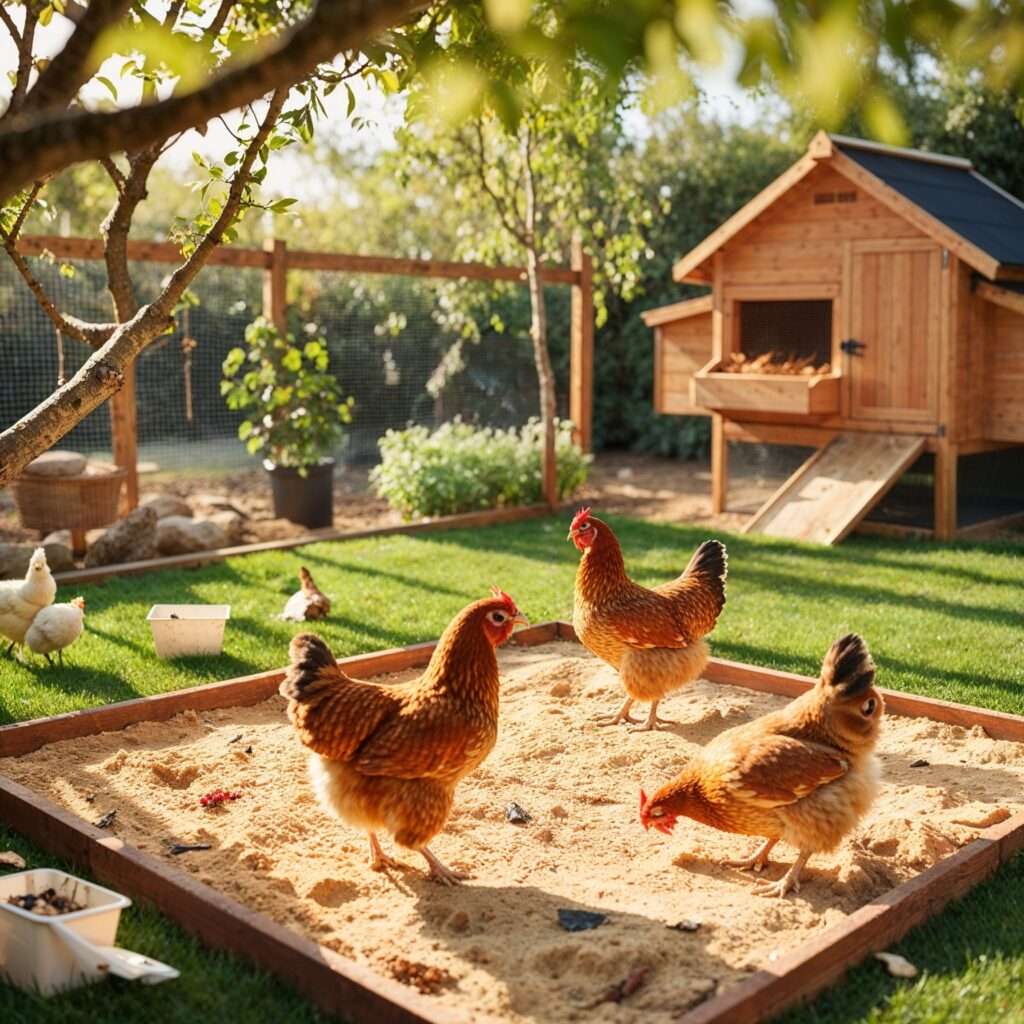
Three chickens showcasing social interaction, dust bathing, and shaded summer space, with a coop for winter adjustments.
Thinking about raising chickens in your backyard? Whether you’re a beginner or expanding your flock, ensuring your chickens have adequate space is crucial to their health, happiness, and productivity. From coop sizes to free-range requirements, this comprehensive guide breaks down everything you need to know about chicken space requirements. You’ll also learn how to maximize space on a typical 0.25-acre suburban lot, creating the perfect environment for your feathered friends to thrive.
1. How Much Coop Space Do Chickens Need?
A chicken coop is essential for sheltering your flock from weather, predators, and other dangers. It also serves as their roosting and egg-laying space. However, overcrowding can lead to stress, health problems, and aggressive behavior, so getting the coop size right is essential.
Standard Chicken Breeds
- Each standard-sized chicken requires 4 square feet of coop space. For example, a flock of six chickens needs a coop of at least 24 square feet (e.g., 6 ft x 4 ft).
- Adequate space reduces stress, minimizes feather pecking, and helps prevent disease.
Large Breeds
- Larger breeds like Orpingtons or Brahmas need 8 square feet per bird. Their size requires additional room to move comfortably and avoid overcrowding.
Bantam Chickens
- Smaller breeds, such as Silkies or Bantams, need only 2 square feet per bird, making them an excellent choice for smaller coops or urban backyards.
Additional Coop Considerations
- Ventilation: Good airflow prevents respiratory problems caused by ammonia buildup from droppings.
- Nest Boxes: Provide one nesting box for every 3-4 hens to ensure comfortable egg-laying.
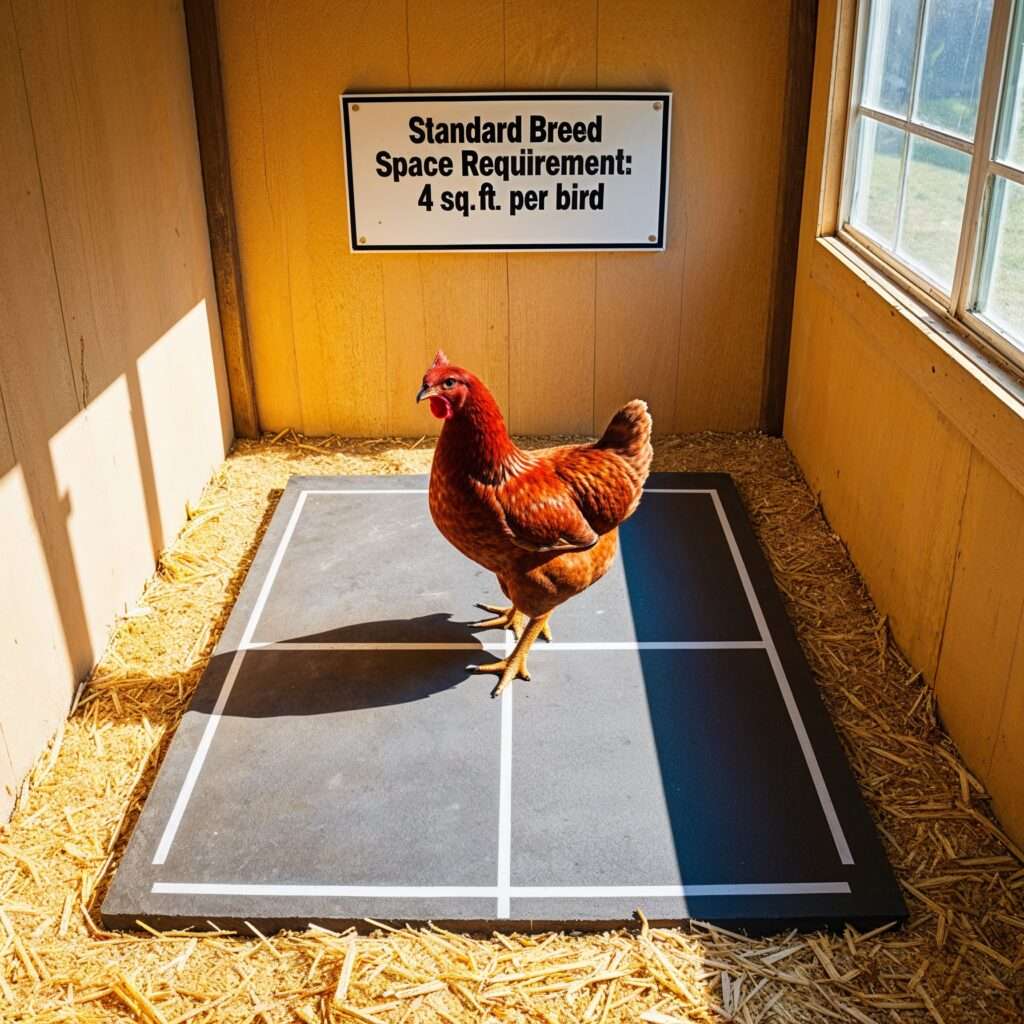
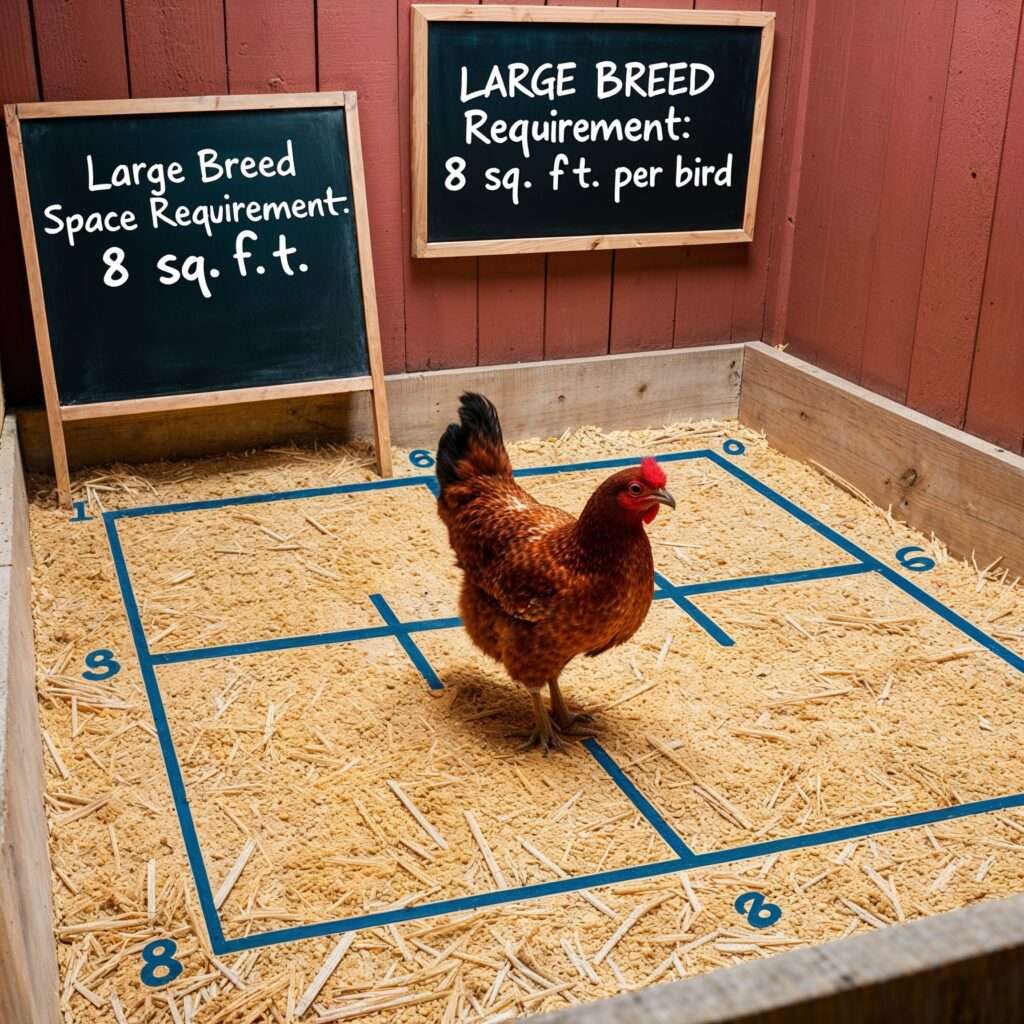
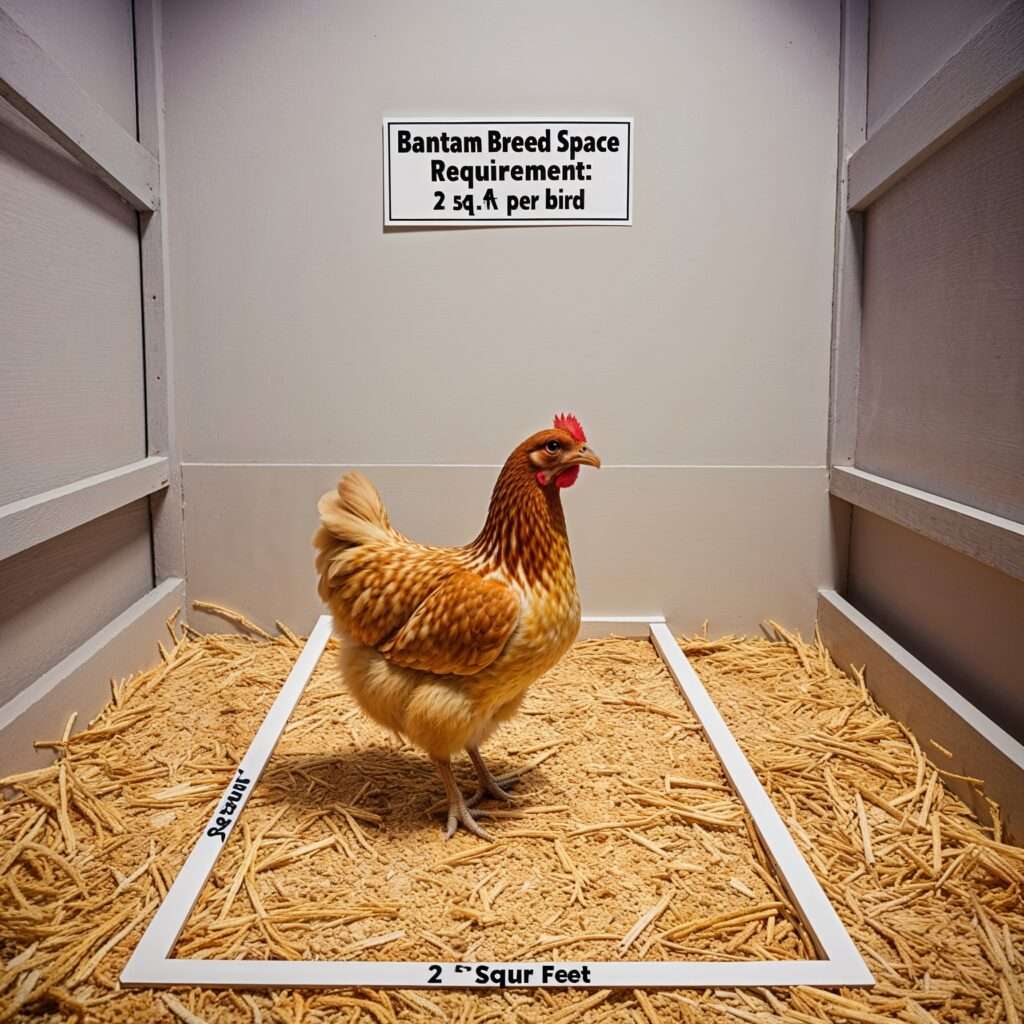
2. How Much Space Should Your Chicken Run Provide?
Chickens need outdoor space to exercise, forage, and express natural behaviors like scratching and dust bathing. A well-designed chicken run provides these opportunities while keeping your flock safe from predators.
Run Size Recommendations
- Each chicken needs 10-15 square feet of outdoor run space.
- For a flock of six, plan for a run size of at least 60-90 square feet (e.g., 6 ft x 10 ft).
- More space is always better, especially for active or larger breeds.
Chicken Tractors
- Portable runs, known as chicken tractors, allow your flock to forage in fresh areas.
- Benefits include preventing ground degradation, reducing odor, and giving chickens access to fresh plants and insects.
Run Enrichment
- Add perches, dust baths, and shaded areas to keep chickens engaged and healthy.
- Enrichment reduces boredom, which can lead to undesirable behaviors like feather pecking.
3. Free-Range Chickens: Ideal Space Requirements
Free-ranging gives chickens the most natural lifestyle, allowing them to forage for food, exercise freely, and explore. However, it requires careful planning to ensure safety and sufficient space.
Minimum Free-Range Space
- Aim for at least 15 square feet per bird, though more space promotes better foraging and reduces competition.
- For larger properties, dedicating 1,000 square feet or more for your flock can significantly enhance their quality of life.
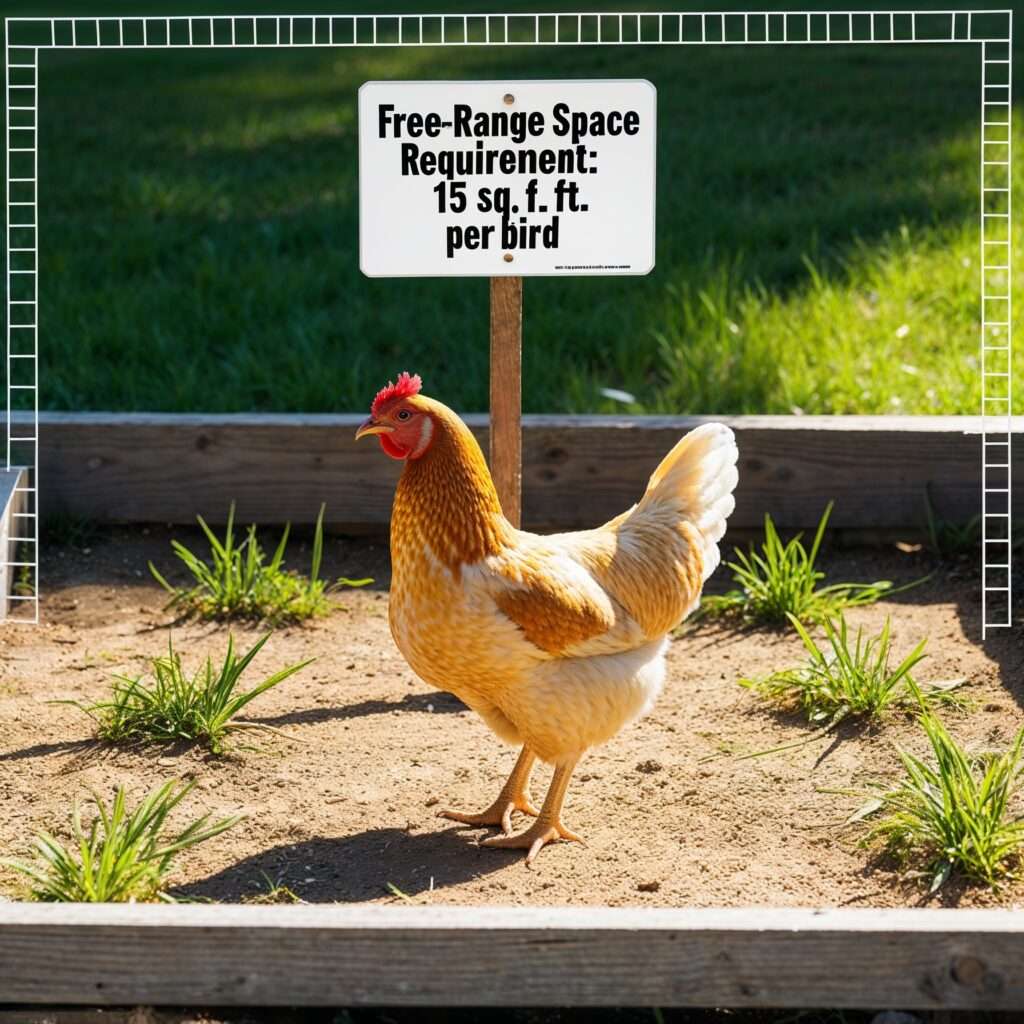
Predator Protection
- Use fencing, netting, or even guardian animals like dogs to protect your flock from predators such as hawks, foxes, and raccoons.
- Secure the perimeter to prevent chickens from wandering too far.
European Standards
- For free-range certification, the European Union mandates a maximum of 1,000 birds per hectare, which equals about 107 square feet per bird. While this is a standard for large operations, it offers a benchmark for backyard flocks.
4. How Many Chickens Can You Keep in a 0.25-Acre Backyard?
A quarter-acre lot (10,890 square feet) provides ample space for raising a small backyard flock. However, the number of chickens you can keep depends on how much of your lot you dedicate to their housing and roaming space.
Coop and Run Setup
- For 6-8 chickens, allocate:
- A coop of 24-32 square feet
- A run of 80-120 square feet
- This setup ensures comfortable living conditions for a moderately sized flock.
Free-Range Chickens
- Dedicating 2,000-4,000 square feet of your backyard allows for 10-15 chickens to free-range comfortably.
- Plan the layout to include shaded areas, predator-proof fencing, and access to fresh water.
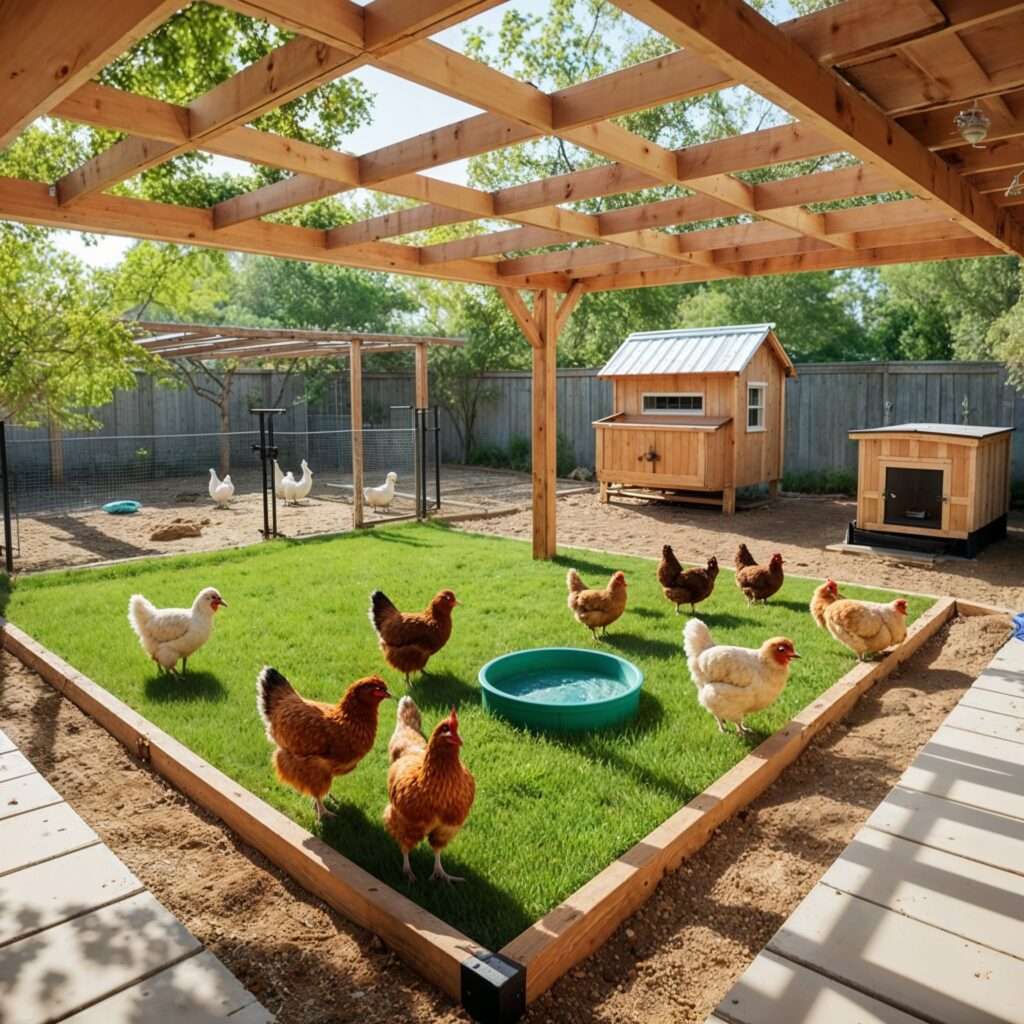
5. Behavioral and Environmental Considerations
Beyond physical space, chickens have social and environmental needs that must be met to maintain a healthy flock.
Social Interaction
- Chickens are social creatures. A minimum of three birds ensures proper interaction, reducing loneliness and boredom.
Dust Bathing
- Provide a dedicated dust bath area filled with fine sand, wood ash, or diatomaceous earth to help chickens manage parasites like mites and lice.
Seasonal Adjustments
- Winter: Offer more indoor space to prevent overcrowding and keep chickens warm.
- Summer: Ensure shaded areas and good ventilation to reduce heat stress.
6. Managing Waste and Composting
Chicken droppings are a valuable resource for gardening, but proper composting is necessary to avoid unpleasant odors or health risks.
Composting Manure
- Mix droppings with bedding materials like straw or wood shavings to create nutrient-rich compost for your garden.
- Allow compost to age for several months to reduce pathogens and balance nitrogen levels.
Odor Control
- Clean the coop weekly to prevent ammonia buildup.
- Maintain good airflow in both the coop and run to keep odors minimal.
7. Choosing the Right Chicken Breeds
Selecting the right breed can make a big difference in how much space your flock requires and how they thrive in your environment.
For Confined Spaces
- Breeds like Orpingtons, Brahmas, and Silkies are calm and adapt well to smaller coops and runs.
For Free-Ranging
- Active breeds such as Leghorns or Rhode Island Reds excel in free-range environments where they can roam and forage freely.
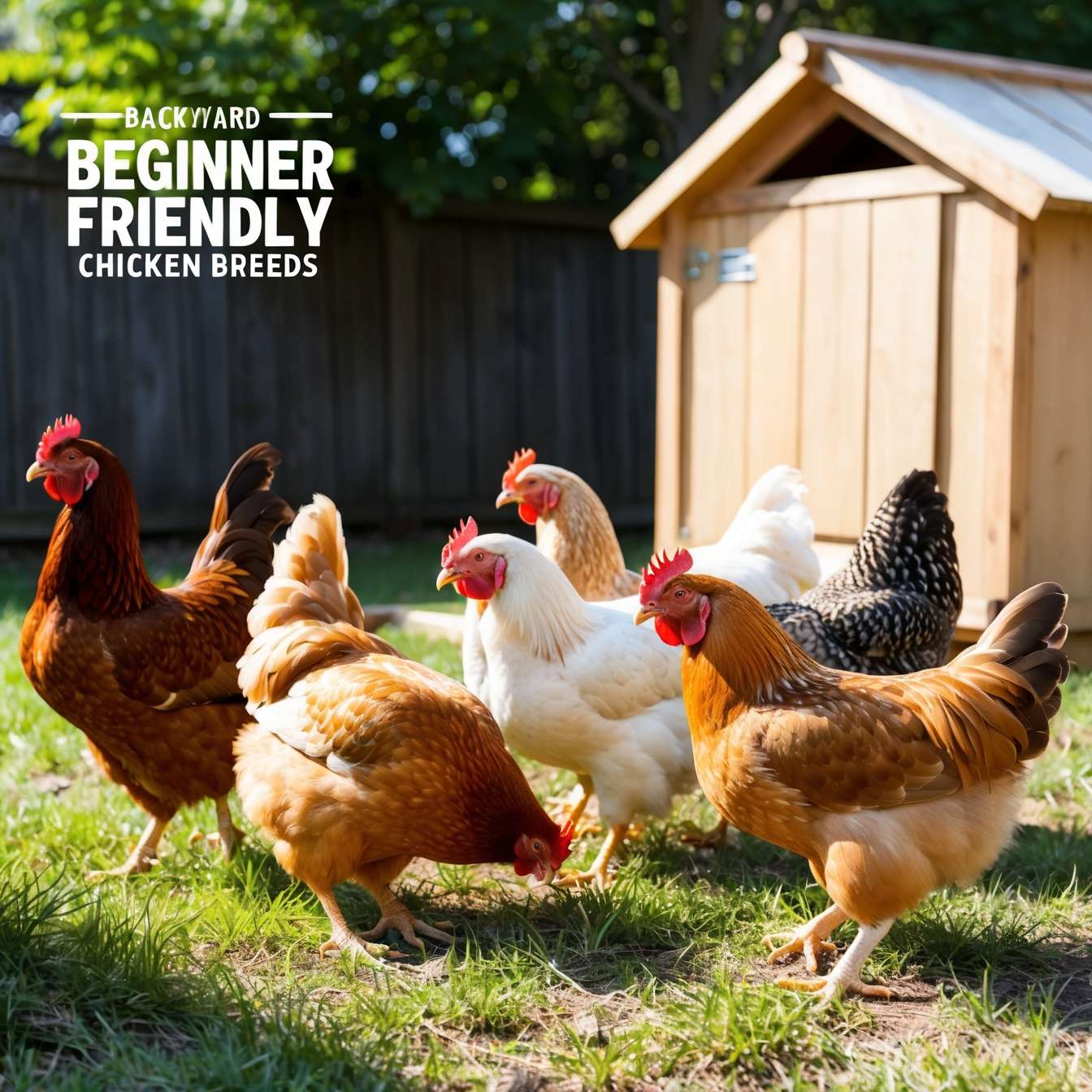
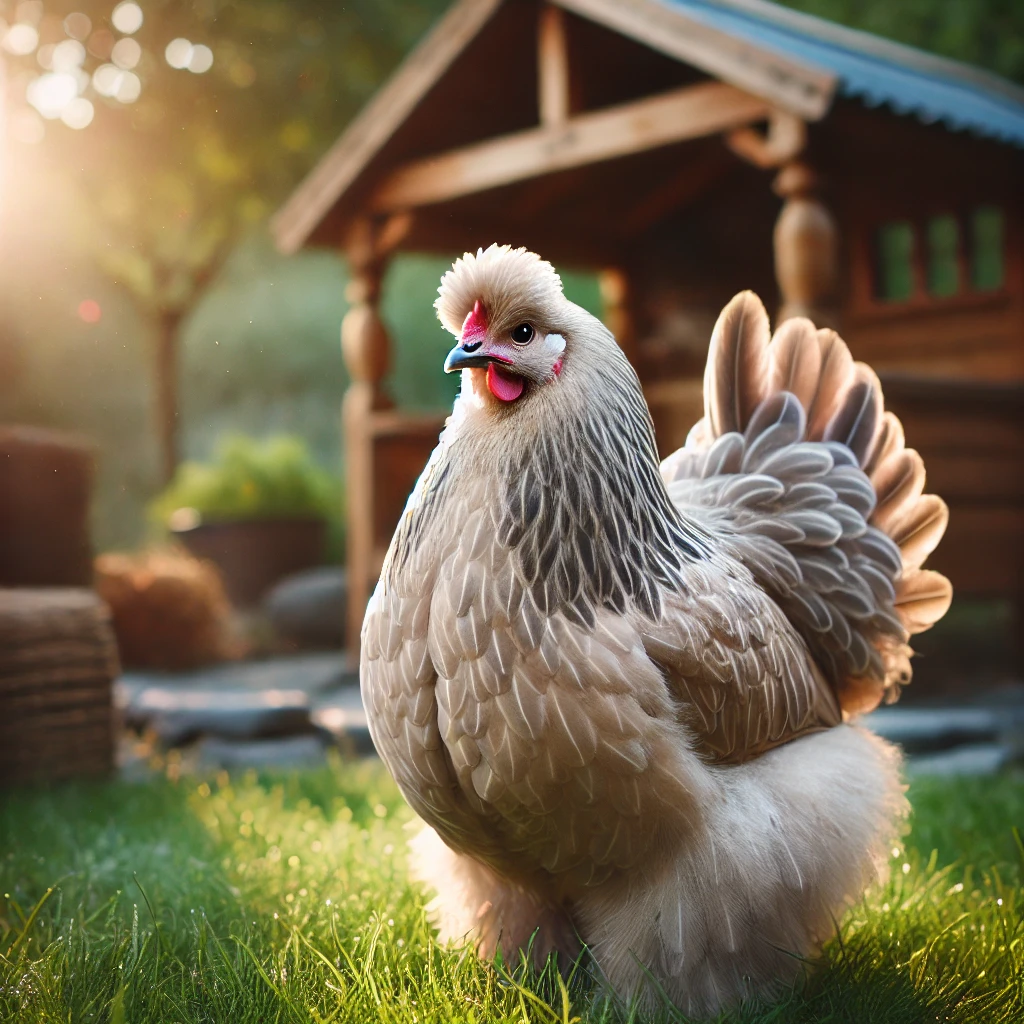
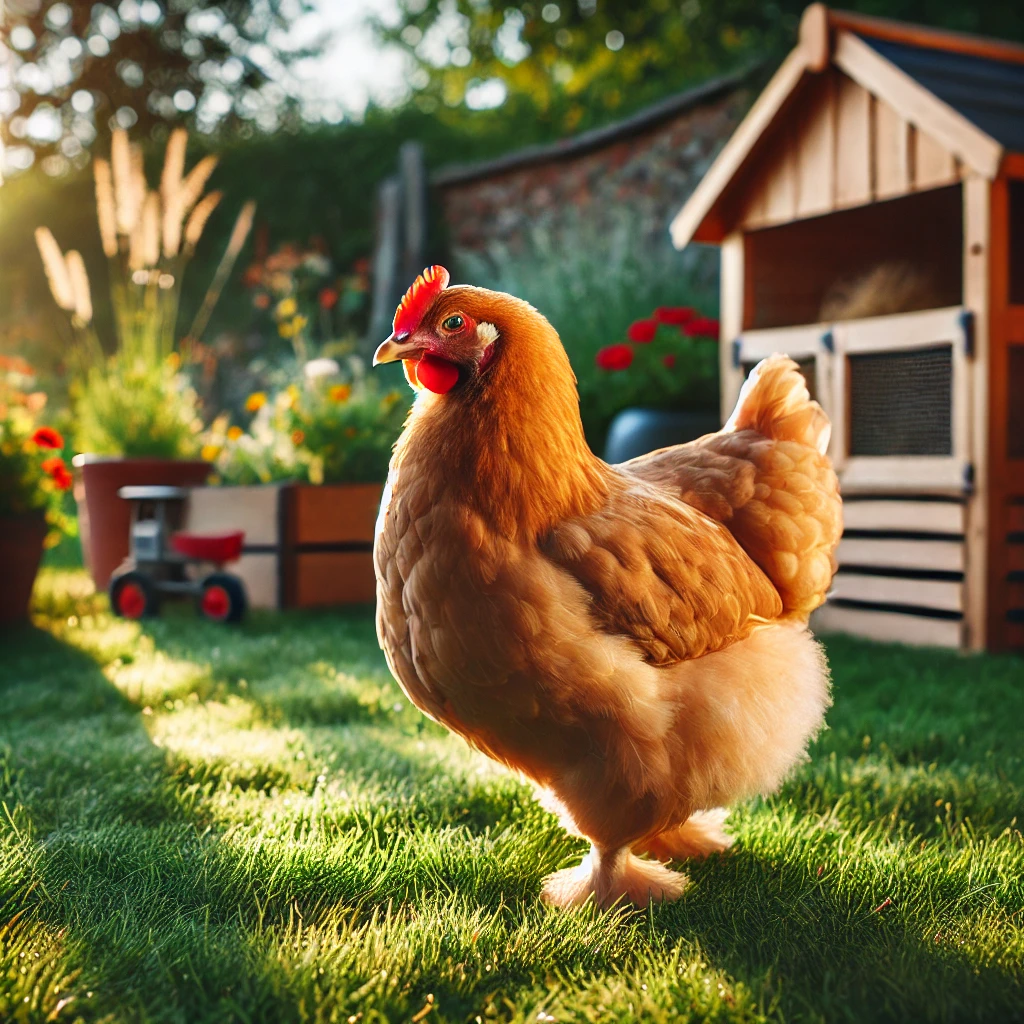
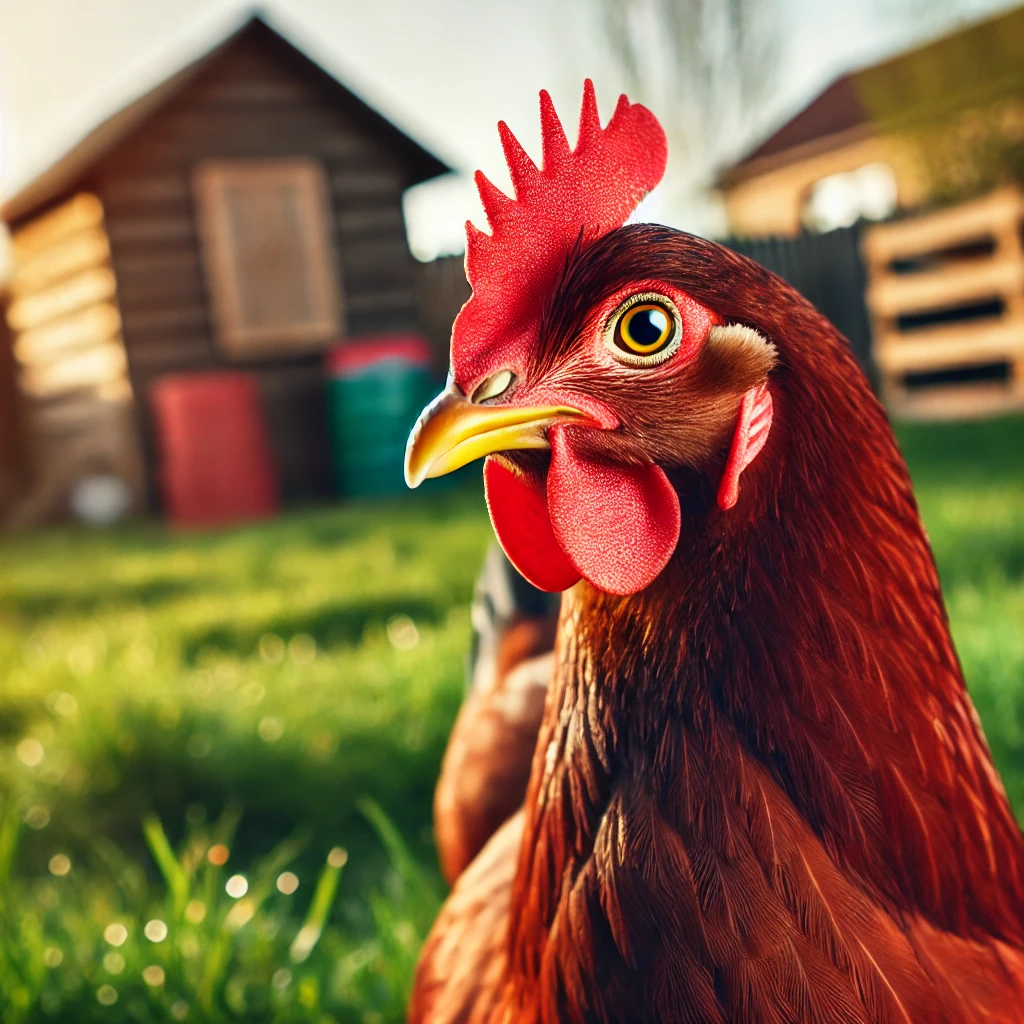
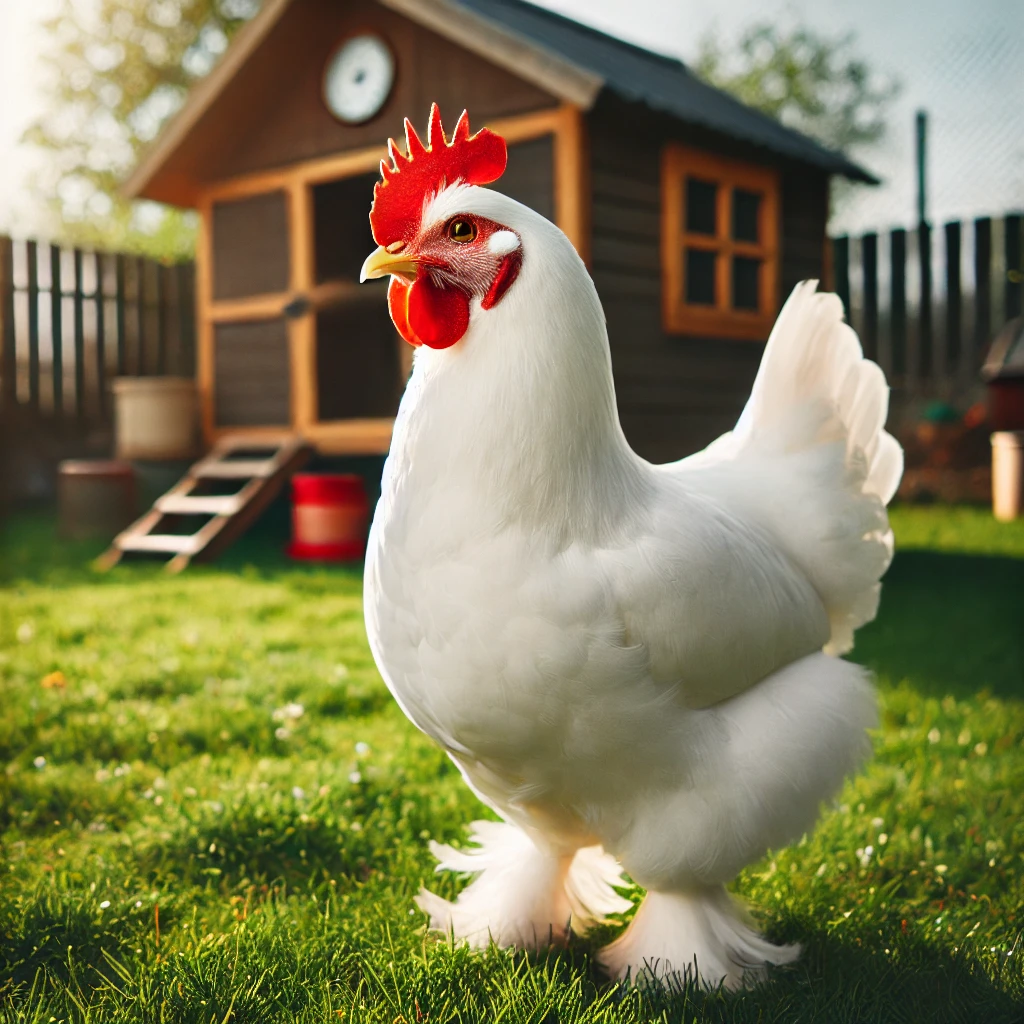
8. Tips for Planning Your Flock
Start Small
- Begin with 3-4 chickens to get a feel for flock care before expanding.
Check Local Regulations
- Verify zoning laws to ensure compliance with limits on flock size and coop placement.
Use Chicken Tractors
- Portable runs help rotate grazing areas, keeping soil and grass healthy while giving chickens fresh foraging options.
Call-to-Action
Understanding chicken space requirements is key to maintaining a happy, healthy flock. Whether you’re starting small or planning a larger operation, providing sufficient coop, run, and free-range space will ensure your chickens thrive.
Have you raised chickens in a small backyard or on a larger plot? Share your experiences and tips in the comments below!
Further Reading on Paranoid Prophet
- Winter Chicken Memes and Facts: Dive deeper into the lighter side of chicken care with a collection of winter-themed chicken memes and fun facts about how chickens handle the cold. You’ll discover amusing insights and practical tips for your feathered friends in winter.
- Poultry Care & Backyard Flocks: Explore the full range of poultry care content, where you’ll find articles on optimizing your backyard flock’s health, well-being, and happiness. Whether you’re new to raising chickens or a seasoned keeper, this section provides valuable advice for every aspect of chicken ownership.
- Wheatgrass Hay & Winter Chickens: Learn about the benefits of wheatgrass hay for your chickens during the winter months. This article explores how adding wheatgrass to their diet can enhance your flock’s nutrition and overall health, helping them thrive through colder seasons.
SOURCES
Ensuring your chickens have adequate space is crucial for their health and well-being. Here’s a comprehensive guide to help you determine the appropriate space requirements for your flock:
1. Coop Space Requirements
- Standard Breeds: Each standard-sized chicken requires a minimum of 4 square feet of indoor coop space. Chickens and More
- Large Breeds: Larger breeds, such as Orpingtons or Brahmas, need more room, with recommendations of up to 5 square feet per bird. Our Daily Homestead
- Bantam Breeds: Smaller breeds like Bantams can thrive with about 2 square feet per bird. Daily Chickens
2. Run Space Requirements
- Outdoor Runs: Provide at least 10 square feet of outdoor run space per chicken to allow for adequate exercise and foraging. Easy Coops
- Free-Range Areas: For free-ranging, aim for a minimum of 15 square feet per bird, though more space is beneficial for their natural behaviors. Chickens and More
3. Additional Considerations
- Roosting Space: Ensure each chicken has 8 to 10 inches of roosting space to rest comfortably. Chicken Fans
- Nesting Boxes: Provide one nesting box for every 3 to 4 hens to accommodate their laying needs. Chicken Fans
- Ventilation: Proper ventilation in the coop is essential to prevent respiratory issues and maintain air quality. Mile Four
By adhering to these guidelines, you can create a comfortable and healthy environment for your chickens, promoting their overall well-being and productivity.
FAQ: Chicken Space Requirements
Coop Space
1. How much coop space do chickens need?
Standard-sized chickens need 4 square feet per bird inside the coop. For larger breeds like Orpingtons or Brahmas, provide 8 square feet per bird, while smaller breeds like Silkies or Bantams need only 2 square feet per bird.
2. What happens if chickens don’t have enough space in the coop?
Overcrowding can lead to stress, feather pecking, aggressive behavior, and the spread of diseases. It’s crucial to ensure each bird has enough room to roost, lay eggs, and move comfortably.
3. How much roosting space do chickens need?
Each chicken requires 8-10 inches of roosting space to sleep comfortably without crowding.
Run Space
4. How much outdoor space do chickens need in a run?
Chickens need 10-15 square feet per bird in an outdoor run to exercise, forage, and express natural behaviors.
5. Can chickens stay in the run all the time?
Yes, but ensure the run is large enough and includes enrichment like perches, dust baths, and shaded areas to prevent boredom and stress.
6. What is a chicken tractor, and how does it help with space?
A chicken tractor is a portable run that allows chickens to forage in fresh areas while protecting them from predators. It’s ideal for rotating grazing areas and preventing overuse of any single spot.
Free-Range Space
7. How much space do free-range chickens need?
For free-ranging, aim for at least 15 square feet per bird, though more space encourages better foraging and healthier chickens.
8. How can I protect free-range chickens from predators?
Use predator-proof fencing, netting, or guardian animals like dogs or geese. Regularly check for gaps or weak spots in the enclosure.
9. What’s the difference between free-range and confined chickens?
Free-range chickens have access to open outdoor spaces, promoting natural behaviors like foraging and dust bathing. Confined chickens rely on coops and runs, which require careful design to ensure adequate space and enrichment.
Space for Specific Properties
10. How many chickens can I keep on a 0.25-acre lot?
A quarter-acre lot can comfortably support 6-8 chickens with a coop and run setup, or 10-15 free-range chickens if you dedicate 2,000-4,000 square feet of space to their roaming area.
11. Can I raise chickens in a small backyard?
Yes, bantam breeds are ideal for small backyards, as they require only 2 square feet per bird indoors and 5-10 square feet outdoors. Portable chicken tractors are also a great option for small spaces.
Behavioral and Environmental Needs
12. How many chickens should I start with?
Begin with 3-4 chickens to learn the basics of care and management. Chickens are social animals, so always keep at least three to ensure proper interaction.
13. How do I prevent overcrowding during the winter?
Provide extra indoor space in the coop during winter months when chickens spend more time inside. Ensure the coop is well-ventilated and free of drafts.
14. How can I make the most of limited space?
Use vertical space inside the coop for roosts and add multi-level perches or platforms in the run. Portable chicken tractors can also maximize usable space by rotating grazing areas.
15. Why is enrichment important in small spaces?
Enrichment reduces boredom and stress in confined chickens. Add dust baths, perches, hanging treats, and shaded areas to keep chickens mentally stimulated and healthy.


